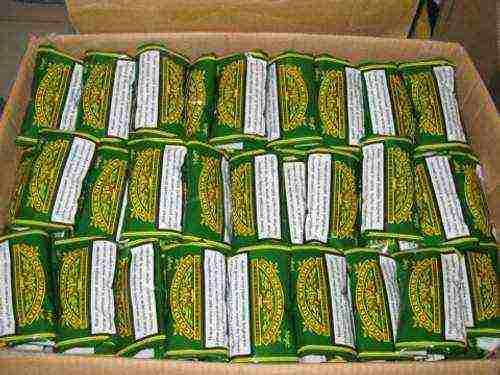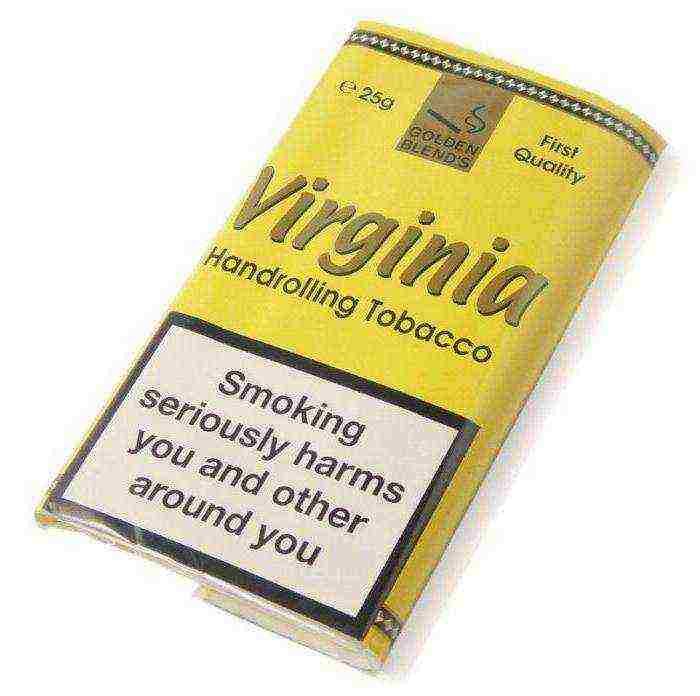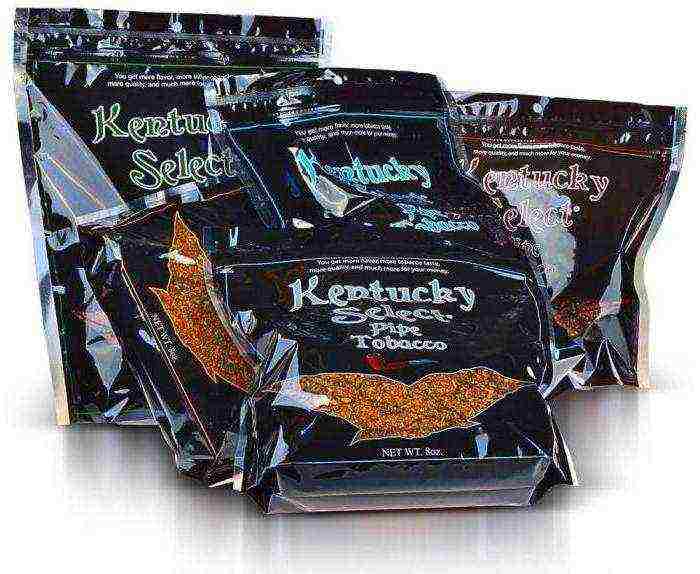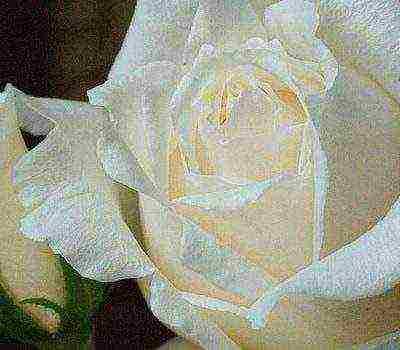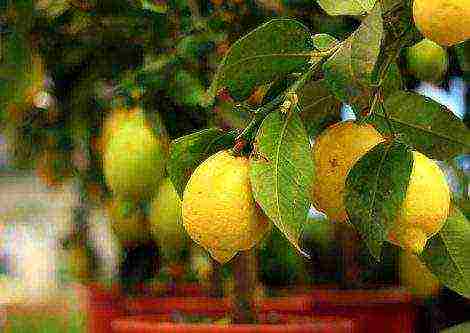Content
There are many varieties of tobacco. Below are the varieties suitable for our climate:
Virginia 202
A variety of the Krasnodar Institute of Tobacco and Makhorka. Early ripe, picks up strength and aroma very well. Resistant to many diseases. High in carbohydrates. Adapted to growing with little or no watering. Very reliable, unpretentious.
This variety belongs to dark Virginias, which have a darker mahogany hue, rich aroma and medium strength. At home, a fire dryer can be replaced with a solar one. Drying in a greenhouse or between window frames gives a good result; in the heat, the main thing is to provide humidification with the help of containers with water. The longer the processing and fermentation of a Virginia leaf takes, the darker, aromatic, and rich it becomes. Even in our conditions, this variety stably grows up to two or more meters and has a leaf size of about seventy centimeters, second only to Burleigh in these indicators. The ripening period is medium late, but with timely planting, it ripens perfectly by the end of September. When ripe, the leaf acquires a pronounced marked yellowness. The planting scheme is traditional: 70x30 cm.
Virginia Gold
Virginia is the sweetest tobacco in the world. It is mainly used in the bag of manufactured cigarettes (70% of the whole bag is the base) and pipe blends. The variety is native to America, Virginia. It is currently grown throughout Western Europe and Russia. Golden Virginia is the easiest to grow, adapted for central Russia, since it has resistance against tobacco diseases (tobacco mosaic disease, etc.). Also very good for beginners (easy to control maturity). It is best grown in the open sun, not in the shade. As the leaf turns yellowish green, it is removed. Gives a very large yield of raw materials. Medium late variety, ripens by mid-August. It grows quickly, likes moderate watering. The bush is "dense". The length of the leaves reaches 60-65 centimeters or more. The stem is thick, about 4-5 centimeters in diameter. The bush is 200-220 centimeters high. Flowers from pale Pink to bright Pink. The seeds are small. The smoke aroma of this variety is bright, with a slight sourness, fruity-sweet due to the large amount of sugars. Burning is excellent. The fortress is average. Fire drying is recommended (duration is about 4-5 days) after which the leaf acquires a light yellow, light brown color, but in our conditions it can be replaced with a solar one, with a complete loss of chlorophyll. The longer the drying time, the darker and stronger the leaf becomes, with a rich aroma. For the full disclosure of the taste, fermentation is required, the more the better (from six months to a year).
Herzegovina Flor
Tobacco with a unique taste and aroma. People call it "Stalin's Tobacco".
Has achieved popularity due to its highly productive, taste and aromatic qualities, as well as medium-moderate strength. Great for smoking in a pipe and filling cigarettes. It is used both in various bags and separately.
In cultivation, it is unpretentious, reaches a height of more than one and a half meters. The leaves are some of the largest for the semi-aromatic type. Due to the instability of the variety, under certain conditions mutations with a height of three meters are observed. Such giants were popularly called the Duke, however, it has not yet been possible to consolidate such a useful property.An important feature of the variety is that it does not tolerate accelerated and artificial fermentation and fully manifests all its qualities only after at least six months of aging. Landing scheme: 70x25.
Ducat Crimean
Crimean tobaccos have always been highly aromatic. And in the Middle Lane, they showed themselves from the best side. Plants are large. Leaves up to half a meter long. Easily fermented.
Dukat Crimean is very popular among domestic amateur tobacco growers. It is unpretentious in cultivation, rather early maturing. The bush is low, but dense, the leaves are up to fifty centimeters long, the correct oval shape. Unlike other varieties, the leaves ripen before the color appears, so they start harvesting from July. The readiness of the sheet is determined by the appearance of a light yellow border at the edges. Combined sun-shade drying is applied to the variety. One of the features of Dukat is that it does not tolerate accelerated and artificial fermentation. This variety was originally bred for cultivation on the territory of the USSR, and therefore it is quite resistant to climate conditions even in Central Russia, although it loses a little in aroma in the north.
Landing scheme: 70x20 cm.
Kentucky Barley
Kentucky Barley tobacco naturally has a pleasant nutty flavor. This compares favorably with other varieties of tobacco, which must go through a difficult and long way of fermentation before use, especially difficult for beginner tobacco growers.
Burley is the # 1 tobacco used in the cigarette industry. In the United States, it is grown primarily in eight states. Approximately 70% is produced in Kentucky.
What characterizes this variety? Burley is low in sugars, high in essential oils. The nicotine content in the leaf varies from average to very high levels. Many lovers of this tobacco call Burley a chameleon - Burley is able to "dissolve in a tobacco mixture, absorb the aroma of the environment - tobacco of other varieties." Indeed, Burleigh is capable of accepting 20-25% of its own weight of flavorings. Canada at one time restricted the import of Burley cigarettes due to the high flavor content.
This strain by its nature contains a high percentage of nicotine. In our conditions of central Russia, it does not gain much nicotine, and this is also ideal for growing.
Makhorka Moscow
A subspecies of tobacco, which differs from Nicotiana tabacum in smaller growth (up to 120 cm) and greater strength. Rustic tobacco got its botanical name for its ubiquity and ease of cultivation. Almost no care is required for her, with the exception of edging and pinning. The peculiarity of this variety is that it is tobacco for those who were late to plant other varieties in early spring. It is not too late to plant a makhorka even in June, and directly into the soil, that is, in a seedless way, and it is guaranteed to yield a harvest by September. However, in order to obtain high-quality raw materials, it is still better to plant it with seedlings, but two to three weeks later than tobacco. Unlike tobacco, makhorka is completely unpretentious and grows calmly from the southern regions up to the Arctic Circle. Another feature: the makhorka is cut off with a whole bush and thus dried. In order for the languor to begin right at the root, a few days before cutting, plastification is used, that is, the stem is cut in half. When cooking shag, the stem (badyl) also matters. When crushed, it is added to the fermented leaves to reduce the strength. Thus, tobacco can be smoked separately, but many people prefer to add it to various tobacco blends to give them a special aroma (especially pronounced in this variety), and Virginia tobaccos are also strong. Even for non-smokers, tobacco has a use as a pest and moth control agent. Planting scheme 50-70x20 cm.
Maryland - Maryland Tobacco
Maryland is one of the three main varieties of the American subspecies of tobacco, just like Burleigh is a non-Virginian Merilyad variety. Ranks third in terms of planting in the United States, and is grown in other countries. This tobacco has been grown in Russia since 1828.
The "Maryland" tobacco is a light variety. The color of the finished raw material is dark brown.
The taste is restrained, has a fine texture and excellent flammability. Used for all traditional French flavored cigars and cigarettes. The amount of nicotine is low. Light, light, air-dried.
High-yielding, early ripening. Disease resistant.
It is unpretentious in cultivation, it easily adapts even to the climate of central Russia, although it does not reach the results at home here. On average, the height of a plant in our climate is 1.8 meters, the length of the leaf is up to 50 cm. Mid-season, it produces flowers relatively early. In the case of edging, it gives a lot of stepsons and needs to be removed. Better than many varieties, it is resistant to tobacco diseases, which is important for self-cultivation. The leaf is dense, normally green, needs to be stewed, but coarsely erupts relatively easily. Shadow cured tobacco. Fermentation or aging is highly desirable for full flavor development. The planting scheme is traditional: 70x30 cm.
Holly 316
Late-ripening form, intensive type of leaf maturation. Low in nicotine. From planting to maturation of the leaves of the last breaking 120 days.
The shape of the plant is cylindrical with protruding leaves. The leaf is sessile, long, broadly elliptical, light green. Technical leaves 30-37. The variety is mid-late, skeletal type. The beginning of flowering on the 108th day, the maturation of the leaves of the first tier on the 80-85th day. The variety is resistant to peronosporosis, tobacco mosaic virus. The inflorescence is round, medium compact. The pommel is slightly pointed. Leaf swelling is average. The edge of the leaf is even or very slightly wavy. The corolla of the flower is light pink. The nicotine content is 1.0-1.5%, the Shmuk number (the ratio of carbohydrates to proteins) is 3.0.
Turkish Refectory
It got its name from the name of the Turkish city of Trabzon. Resistant to unfavorable growing conditions. Ripens quickly.
Turkish has long been successfully acclimatized to Russian and Ukrainian conditions. And successful zoning is not the last thing for growing tobacco. It is quite possible that due to long-term cultivation in our humid climate and rich soil, it reaches incredible sizes for a typical Oriental (up to three meters in height, according to Ushakov), but it is also quite likely that this is a hybrid that successfully combines high productivity of American varieties with oriental aroma and sweetness. In any case, it is not worth chasing the size and re-fertilizing Turkish: due to the excess of nitrogen, it becomes very strong and loses in aroma. But with proper cultivation, the variety has a rich, independent aroma with chocolate notes and an average strength. When smoked, it gives off white thick smoke. Turkish can be used in a pipe and roll a monotabac, but it works best in a bag of skeletal American varieties. Easily gritty and does not require special fermentation. And although now Turetsky is gradually being replaced by foreign varieties, it still remains very popular among gardeners. Landing scheme according to Ushakov 100x70 cm.
A good selection of tobacco seeds here:
Making rolls is a rather meticulous and creative process that has one significant advantage: you can choose any tobacco for filling and experiment with flavors to your heart's content. Products of this kind are most often called the products of the RYO group, which literally translated from English means “roll your own”.

Many smokers enjoy the rolling process and this ingenious method of consuming tobacco.Regular cigarettes, which are sold in almost any store, are not always filled with quality ingredients. Very often (especially in inexpensive packs) we have a mixture of dried seaweed and cheap tobacco. Those who have tried the best roll-up cigarette tobacco at least once can no longer go back to factory products. They say that they make the throat tickle, and the taste is strange, and in general the grass is grass, and not cigarettes. Therefore, this phenomenon (the manufacture of hand-rolled cigarettes) is already moving from the category of rare to the more familiar and even fashionable. Before figuring out what kind of roll-up tobacco is the best, let's conduct a small educational program and find out how it all began and how it actually ended.
Brief educational program
The first hand-rolled homemade tobacco appeared in the 17th century and the main "producers" of these products were the port poor of the city of Seville, in Spain. The workers, who received pennies, collected tobacco waste and, with the help of the found paper, rolled what looked like cigarettes. They were named with the beautiful and specific Spanish word “papiletti”. Naturally, such waste could in no way be called the best tobacco for roll-ups, but it was from here that this direction began its journey around the world.
This method gained particular popularity among smokers in the sixties of the twentieth century, when rebels and other youth tried to draw attention to the simplicity of everyday life. Hand-rolled cigarettes were an obvious attribute of such a lifestyle and were colored with a romantic halo of freedom. For modern smokers, rebellion has receded into the background, and high-quality and tasty tobacco, which is a very good alternative to ordinary cigarettes, has become a priority.
Features of tobacco
The best roll-up tobacco is cut very thinly, almost the same thickness as cigarette tobacco. But unlike the latter, it has a pleasant aroma and, as strange as it may sound, is natural. As mentioned above, in the conveyor production of middle and lower-level cigarettes, a mixture of dried seaweed, some kind of synthetic fillers and only a small part of the tobacco leaf are used.
The best roll-up tobacco is made from selected varieties of this culture, which are grown not only for cigarettes, but also for making cigars, and this is already an elite and very expensive product. Therefore, there can be no question of some kind of algae or synthetic nicotine supplements. Manufacturers offer a very wide assortment of tobacco, where each type differs from the other in the degree of strength, taste and variety of culture.
Before deciding which tobacco for roll-ups is better, you need to know that there are a lot of its varieties. Flavored and non-flavored options can be found. The former can be fruity, coffee, chocolate, etc., while the latter have a natural taste. Another grading parameter is strength: light, medium and heavy. This criterion is purely individual and depends, as a rule, on the smoking experience. In this case, be sure to pay attention to the Zware mark on the packaging, where the subsequent numbers, letters or phrases indicate the strength of the composition. It should also be noted that most of the flavored tobacco comes in a light version. When you smoke it, the room is filled with a specific smell.
Best tobacco
So, let's figure out which roll-up tobacco is better. Consumer reviews, expert opinion, as well as the characteristics of each type will be discussed below. For a more descriptive picture, we will present the varieties in the form of a rating. The list and its leaders do not at all pretend to be the correct and only true order of things. Each person has his own preferences and it is not entirely correct to single out one type of tobacco to the detriment of another.
Best roll-up tobacco (rating):
- Virginia.
- Burley.
- Kentucky.
- Oriental.
- Latakia.
- Perique.
Let's consider each variety from the list in more detail.
Virginia
This is a fermented tobacco (tar and nicotine reduced) of American origin. Virginia is the most popular and best roll and cigar tobacco. The variety has a specific aroma that cannot be confused with any other, as well as a rich deep taste. Consumers are extremely flattering about Virginia. Buying this variety, they are sure that there will be a really high-quality product inside without the ubiquitous synthetic additives.
On sale you can find dark and light "Virginia". The first is distinguished by its strength, and the second by a variety of flavors and low nicotine content. Which tobacco for roll-ups is better to decide, of course, for you, but connoisseurs and admirers of this direction do not advise buying the light version. They believe that its true taste is spoiled by aromatic additives and is more suitable for women than for seasoned men.
Burley
This variety is produced in four countries: Mexico, United States, Korea and Brazil. Barley is considered to be one of the finest roll-up tobaccos. Consumer reviews regarding this variety are unambiguous: tasty, high quality and aromatic.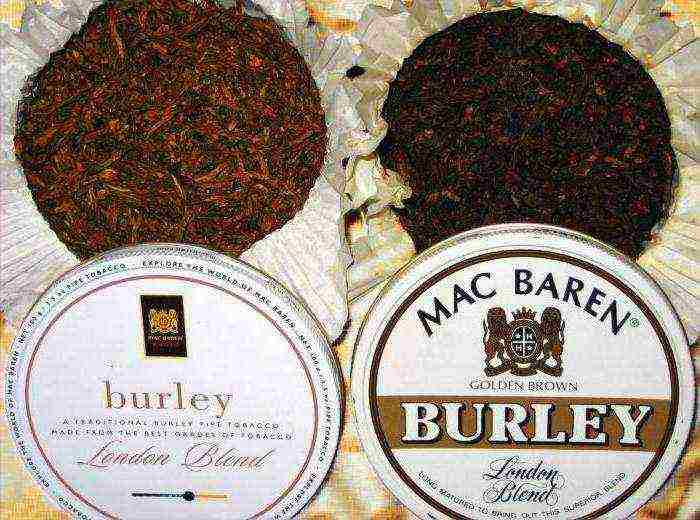
Barley is low in sugar and high in nicotine. It is also characterized by a relatively mild and inactive intrinsic aroma. The variety perfectly absorbs odors after fermentation, therefore, immediately after drying, it is supplemented with natural shock absorbers.
"Barley" has repeatedly received awards at specific exhibitions as the best tobacco for roll-ups. But besides the usual direction, this variety is used for the preparation of pipe and chewing masses. The light variety of this variety has the flavor of cocoa beans and roasted walnuts, while the dark variety has a classic taste and strength.
Kentucky
It is a large-leaved variety that is smoke-dried during preparation. "Kentucky" is distinguished by its strength and dark color. The variety was bred in the American state of the same name and has a rich, heavy taste, and its smell is very reminiscent of the aroma of dried plums.
It is also worth noting that the strength of this tobacco is so strong that it is added to special mixtures in an amount of no more than 20% of the total mass. Consumers speak well of Kentucky, especially those who love fancy rolls.
Oriental
This variety is grown exclusively in eastern countries, where the Mediterranean climate prevails. Europeans have tried more than once to reproduce "Oriental" on their territory, so as not to depend on the whims of exporters, but it turned out only a miserable resemblance of a variety, or even an ordinary grass for pipes at a cent per kilo.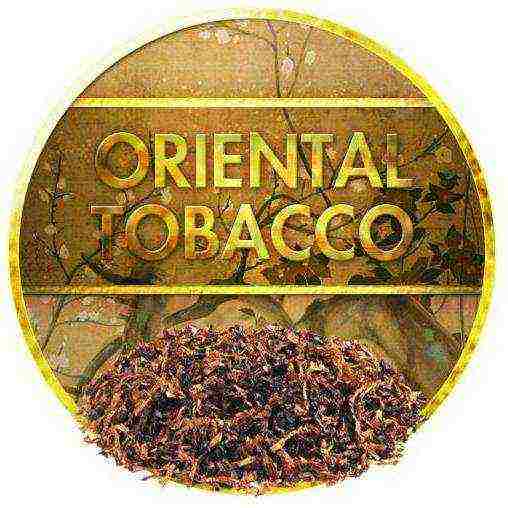
The production process is laborious and painstaking. The leaves are hung on laces and each petal is dried in direct sunlight. The result is a specific and rich taste with peppercorn and a pronounced aroma.
The variety is notable for its lightness, so lovers of something outrageous are better off passing by, but connoisseurs of oriental flavors will surely like Oriental. Consumers are extremely flattering about this tobacco, and smokers especially love it for its softness and sweetish taste.
Latakia
It is an elite variety imported from Asia. The main suppliers of Latakia are Cyprus and northern Syria. The drying process looks very unusual and authentic (smoking over a fire), but the effect obtained exceeds all expectations. Due to the specifics of the preparation, the color of the tobacco turns black, so it is very difficult to confuse the variety with other varieties. Moreover, smoking takes place on firewood from cypress or milta, which adds a bouquet of unique aromas to the final product.
Consumers speak quite flatteringly about Latakia, noting its strength, taste and amazing scent of the tropics. In our stores, this variety is a rare guest due to its high cost and specificity, so you have to order through intermediaries.
Perique
This is an expensive tobacco from the United States with a specific aroma and piquant taste. The variety, which is called an amateur, is therefore popular only in narrow circles of consumers. Due to its taste characteristics, it receives either absolutely positive or sharply negative reviews. Therefore, before you buy the "Perik" variety praised by one person, you should first try it, and only then stock up for future use.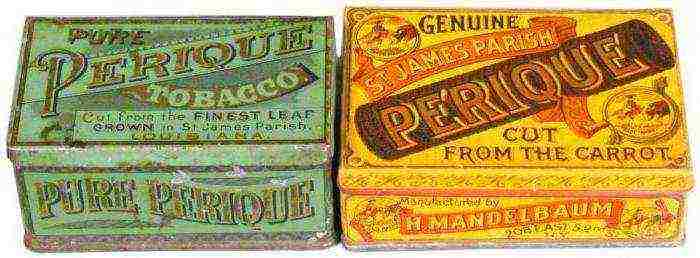
This tobacco is fermented according to the old Indian method and dried in the open air. In its pure form, the variety, as a rule, is not smoked due to its high strength, but lovers of something more funky will certainly appreciate the hand-rolled products made without impurities.
Summarizing
Elite and premium roll-up tobacco is made from the above varieties. The most popular and demanded brands are Golden Virginia, Mac Baren, Harvest, Drum and Bali. Here, as with varieties, it's all a matter of personal preference. Someone likes it stronger and more cheerful, while others prefer light and fruity aromas.
The most versatile tobacco is Virginia. The brands that are made with its content are varied and in the assortment of the brand you can always find something for yourself: from classic strong types to women with flavors of fruit and menthol.
Tobacco is delivered to distribution points in small packs of 40 or 50 grams. You can wind about forty ordinary cigarettes from one package. The density of the packing plays an important role here. Some like to be denser, while others like more discharged cigarettes. It will also be useful to pay attention to the tightness of the pack. The exhausted tobacco loses its unique taste and simply crumbles into dust, therefore, after opening the package, it is better to transfer the composition to a glass jar or a special pouch. Well, and finally, it is worth recalling that the Ministry of Health tirelessly warns about the dangers of smoking to your health.
Smoking tobacco varieties description
American 26
Type of tobacco: skeletal aromatic, mid-season. Drought tolerant. American 26 is used for cigars and cigarettes. The plant has a cylindrical shape, its height is about 140-180 cm.The leaves are light green in color. Ripens in fifty-two days. Processing method: solar drying. The number of leaves is about 29.
Dubeck
Dubek belongs to a type of aromatic tobacco that is also called oriental. It is a small-leaved variety. The height of the bush is 1.7 m on average. The number of ripe leaves is 22-24 pieces.
The processing method is the same as for all orientals - solar drying. The plant is small-leaved and well baked, so you can dry it with a whole bush. The upper leaves mature in an average of 94-125 days.
Ternopil 14
"Ternopolskiy 14" is a mid-season air-dried variety. After planting, it quickly takes root, languishing lasts about two days. The shape of the bush is cylindrical, the size of the leaf is 45x25 cm. The color of the leaves is light green. The number of technical leaves is on average 25 pieces. The bush, grows 180-210 cm high, must be carried out three days before air drying.
Anniversary
The jubilee variety belongs to the skeletal type. Air drying is preferred. The bush, 1.65-1.8 m high, has an ellipsoidal shape with protruding leaves. The color of the leaves is dark green with a bluish tint. When the plant is ripe, it takes on a yellowish color. The number of leaves is twenty eight - thirty two pieces. Leaves located on the lower tier ripen in 60-80 days. Drying shade.
Refectory 92
"Trapezond 92" is of the skeletal type. The foliage, which has a light green color and has an oval shape, ripens quickly - up to an average fragility of 68 days, and about 97 days before final breaking. The bush, 1.6 m high, has the shape of a cylinder with raised leaves. The number of suitable leaves is thirty to thirty five pieces. Processing method: shadow drying.
Fragrant
The variety is fragrant.The shape of the plant is cylindrical, and the color of the leaves is pale green. The leaves are arranged horizontally on the stem. The time from planting to the readiness of seedlings in greenhouses is 1.5 months. The number of leaves is 24 pieces. Draining lasts 3 days, drying for two weeks.
Galitsky original
Galician original is an aromatic - skeletal type. The plant, 2.6 m high, has a cylindrical shape. Ripening period - 3 months, including the growing season.
The leaves are broadly oval and light green in color. The number of suitable leaves is twenty-seven pieces. Ripening of leaves in tiers is almost the same. Drying of leaves is shady.
Herzegovina flor
Herzegovina flor is a variety of large-leaved, sweet, oriental tobacco. The type is semi-aromatic. Plant height reaches 2 m. The leaves are large, oval in shape. The number of technically suitable leaves is 25-30 pieces.
Grown with seedlings. Landing - end of May. The harvest begins from mid-summer to mid-autumn.
During the drying process, the leaves should not come into contact with each other. Complete fermentation after 2 years.
Crimean ducat
Crimean ducat belongs to the varieties of Russian selection based on Turkish tobaccos. The leaves have a regular oval shape. Plant height - about 2 m. The number of technically suitable leaves is about thirty pieces.
They are planted in open ground by the end of May. Harvesting lasts from July to October. It should be dried in such a way that the leaves do not come into contact with each other. Drying: sunny and shady. Once every 30 days, the bush should be treated against rot and thrips.
Havana
Havana is a typical black Cuban tobacco. The height of the plant is about 1.6-1.8 m. The length of the leaf is about 0.5 m. The leaves are dense, fleshy and resinous, with a dark green color.
The growth period of seedlings is 1-2 months. Ripens within two months. After ripening, the leaf is dried in the sun for two days, and then in a dark room with high humidity. The number of leaves is 16.
Kentucky Barley
Aromatically - skeletal type. Kentucky Barley is a dark brown-colored, cigarette-tube tobacco. Has a strong aroma. The size of the sheet is 50x55x35 cm. The growth period of seedlings lasts 1-2 months. Processing method: fire and shadow drying. Ripening period 50 days.
Virginia Gold
Virginia Gold belongs to the medium-late, sweet variety. Processing method: heat or air drying. Plant height reaches 1.2 m. The number of leaves (technically suitable) - 25-30 pieces. The length of the leaf is about 60-65 cm. The stem is 4-5 cm in diameter. The flowers can vary from pale pink to bright pink. The seedling growth period lasts 1-2 months. The ripening period is on average 60 days. Drying solar.
Samsun
Samsun belongs to the early maturing varieties. Medium-leaved. Aromatic type. Processing method: aging, sun and shade drying. The plant, 1.5 m high, has a cylindrical shape.
Feature - petiole leaf. The leaf is pterygoid and resinous, with a dark green color. The leaf texture is thin and elastic, and the veins are small. Seedlings grow within 1-2 months. The number of leaves is 28-36 pieces. Ripening time 132 days.
November 18, 2011
The best tobacco in the world

There are different varieties of tobacco that have their own varieties. All of them differ in numerous parameters, the main of which are: the color and size of the leaves, the chemical composition of the substances in them that determine the taste and aroma of cigarettes, as well as the method of processing. Virginia Tobacco is the most popular and widely used tobacco variety. Today, its share is more than 70% of all tobacco grown in the world.
Virginia is the base for most tobacco blends. This variety gained its popularity due to its natural sweetish taste and pleasant subtle aroma. Virginia is grown on almost every continent (with the exception of Antarctica).Tobacco of this variety is cultivated in the North American states, South Africa, Brazil, India, China, Moldova, Azerbaijan.
The best Virginia grows in areas where the relative humidity is about 90 percent, and the temperature during the growing season is kept within 35 degrees Celsius. Such natural conditions exist in the states of Georgia, South and North Carolina, in Zimbabwe, Malawi and Brazil.
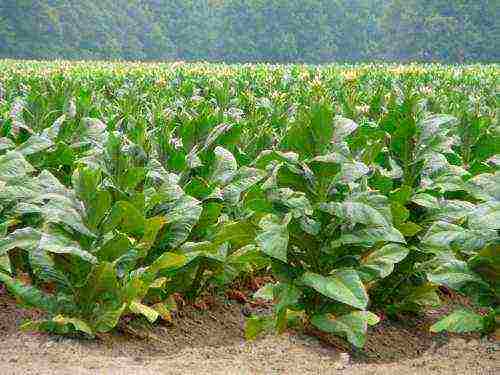
The strength of this tobacco depends on what time it is harvested, what type of drying is used, and how long the plant material undergoes fermentation.
Drying Virginia is carried out in two ways - outdoors or under the influence of hot air in specially equipped rooms. In most cases, the second method is used: the leaves are collected in bundles, suspended in rooms where hot air is supplied for five days. The quality of the future tobacco depends on the temperature and humidity in the room. If the tobacco dries for a long time, the taste becomes stronger and the aroma richer. With short-term hot drying, Virginia somewhat loses its strength and juiciness of aroma, retains a sweet taste with fruity tints.
Following drying, the tobacco leaves are kept in sheds to re-absorb moisture. And then they are stored at the factory for a year or two. And only after that they undergo further processing. Thanks to its light and self-sufficient taste, Virginia is a part of every pipe mix, and also smokes excellently in its pure form.
